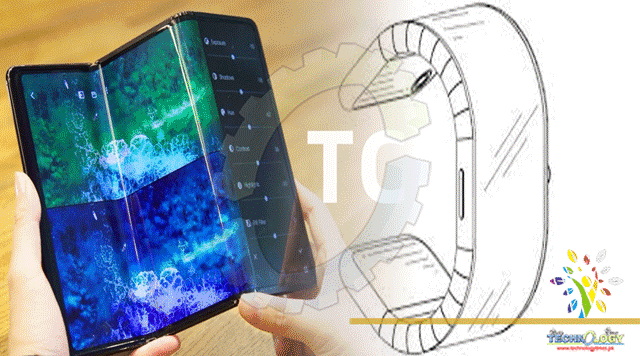Why incorporate just foldable screens or a rollable display when you could put both in one device? That’s the theory of TCL, according to company sketches and renderings seen by CNET.

Why incorporate just a foldable screen or a rollable display when you could put both in one device? That’s the theory of TCL, according to company sketches and renderings seen by CNET.
The company is developing a device that can be expanded from a smartphone into a small tablet by unfolding the screen, the images show. It would use a foldable display and TCL’s DragonHinge, a multigear hinge that the Chinese company believes will enable it to build a variety of foldables. Once the device is expanded, users can unroll an interior display to expand the gadget even further, turning a compact smartphone into a large tablet, according to the images.
TCL plans to show off renderings of the device during an event in mid-April. At the same time, it’ll unveil its 20 series phones that it teased during its CES press conference in January. The phones are expected to fall into the midrange and budget categories, giving users inexpensive smartphone options. It’s unclear when, or even if, the foldable/rollable concept device from TCL will become a reality.
TCL is among the top players in televisions but has a lower profile when it comes to phones. It’s best known in mobile for its low-end Alcatel devices and its short-lived effort to sell BlackBerry-branded phones. Rather than sell devices under the BlackBerry name, TCL is focusing on its own brand, with the hope that its popularity in TVs translates to smaller devices.
TCL has been showing off sketches and prototype foldable and rollable devices for the past couple of years, but it hasn’t yet introduced a product that consumers can buy. The company has said it’s on track to sell a foldable device this year. By contrast, Samsung has introduced three different foldables since 2019.
The TCL images seen by CNET show the efforts by phone makers to come up with innovations to attract buyers. People are holding onto their smartphones longer than before, and it’s getting harder to justify a pricey upgrade given the relatively minor tweaks made every year. Would-be buyers want bigger screens on their mobile devices, but there comes a point where the products are too big to hold or to be practical. The appeal of foldables is the ability to turn a relatively compact device into one that’s bigger. And rollables could take that even further.
So far, foldables haven’t attracted many buyers. The few devices on the market are too expensive for most users. Samsung in December said it’ll bring “more accessible” foldables to the market in 2021, which is likely code for less expensive.
In 2019, Samsung introduced one of the world’s first foldables: the $1,980 Galaxy Fold. The device folded outward from a phone into a tablet, and it wowed most people who tested early versions of the device. Today, Samsung’s cheapest foldable is its $1,380 Galaxy Z Flip, which went on sale a year ago and is a phone clamshell design. The company’s flashier Galaxy Z Fold 2 retails for $2,000.
LG, meanwhile, teased what it hopes will be the world’s first rollable phone during a press conference at CES in mid-January. The device has a display that extends upward to create a larger, more tablet-like screen. As CNET’s Roger Cheng noted, “presumably, the bottom of the phone, when it’s in landscape mode, has a mechanism that furls and unfurls the display, similar to how its rollable OLED televisions work — but on a smaller scale.”
TCL’s concept device appears to unfurl to the side, extending the rollable display from the phone’s body to reveal a tablet.
Originally Published at CNET